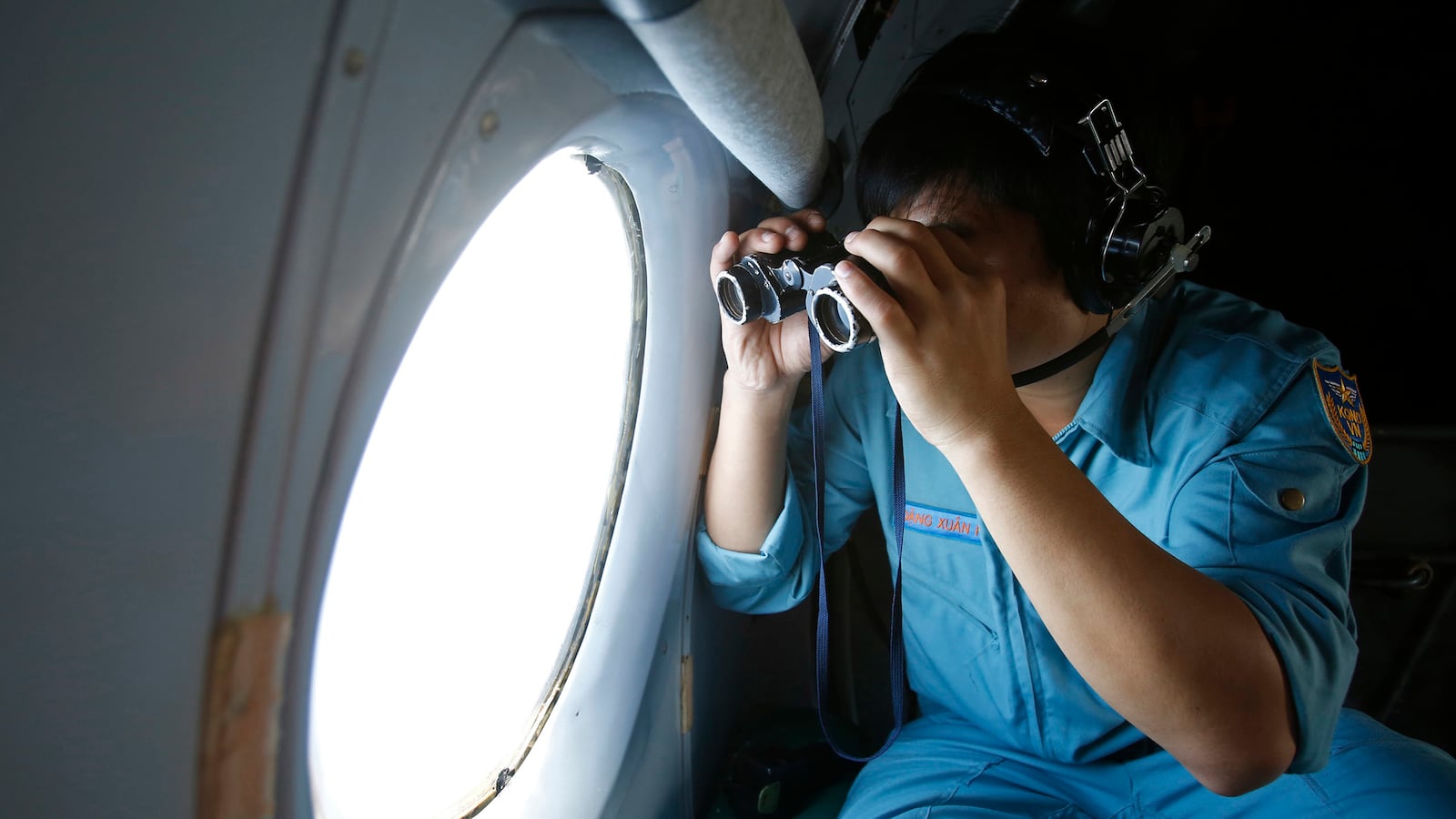What happened to Malaysia Flight 370? Did it veer off course? Was it hijacked? Could a meteor have hit it?

All of these questions have made headlines at major cable news networks and websites. In the five day since Malaysia Airlines Flight 370 disappeared en route to Beijing, the public has been consumed with an unending series of questions about how a commercial airliner could seemingly vanish into thin air without leaving a trace.
All plane crashes attract a certain level of morbid fascination, but what’s really driving our Flight 370 obsession is the fact that it’s still missing. “We’re not seeing it as an airline accident anymore. It’s a mystery story,” says Patrick Smith, a pilot and author of Cockpit Confidential and askthepilot.com.
Missing planes, missing people, missing objects—they often make up the biggest stories of the news cycle. Think last year’s manhunt for the Boston Marathon bombers (not to mention our decade-long search for Osama bin Laden), or the ‘Where in the World Is Edward Snowden’ game. It’s the stuff of legend and Hollywood movies—Indiana Jones searching for the Ark of the Covenant, the Mossad tracking down fugitive Nazis, Joel Cairo sniffing around for the Maltese Falcon. Without our fascination, there would be no Unsolved Mysteries, Cold Case Files America’s Most Wanted or CSI. There wouldn’t be countless Internet forums and books dedicated to the unknown fates of Ambroise Bierce, Anastasia Romanov, Jimmy Hoffa or Amelia Earhart—and, now, to Flight 370.
When something disappears in modern times, it’s uncanny. This is the age of satellites and radars and Google Earth, of cellphone cameras (and cellphone towers) and IP addresses. It’s almost impossible not to leave a data trail these days. And with the recent revelations about the NSA, Americans may assume that it is impossible to truly ever go off the grid. That’s why the thought of Flight 370 disappearing from radar is so fascinating and perturbing. That the plane apparently continued flying for at least 45 minutes after its transponder signal was lost is all the more baffling.
“That’s what is riveting to people—because there’s so much immediacy in the media now people are used taking it for granted,” say Smith, the pilot and author. “People are demanding answers right away, and with air crashes, that’s not the way it happens. Sometimes, it takes months.”
Smith cites the Air France Flight 747 crash in 2009, which is “still not fully understood” even five years later. “Technology is only going to take us so far even in the field of modern aviation, as sophisticated as it. The world is big and a Boeing 777 in that context is tiny.”
In truth, Flight 370’s disappearance shouldn’t seem so strange to us. If anything, it’s a reminder that there are still pockets of mystery in our overly-connected world. For one, we’re wrong to assume radar coverage is absolute. “It’s sort of like technological subjectivism,” says Thomas Anthony, Director of the USC Aviation Safety and Security Program and former FAA Regional Division Manager for Civil Aviation Security in the Western Pacific Region. “Just as some people move from one country to another and expect one country to have the same culture, there are vast areas of the world that are not covered by radar coverage.”
Anthony says that even a flight from Los Angeles to Honolulu may at times be outside of the scope of radar. “Radar signals can only go 200 miles because it’s a line of sight technology,” he explains. “Even if you put it on a big building, the curvature of the earth prevents radar from going to the airplane.”
In theory, a commercial airline is always in contact with people on the ground. There are a variety of ways for the pilots to communicate, including high-frequency radio, FMS datalink, or CPDCL (controller-pilot data link communications). But Smith says the bottom line is that while “the technology is there, it’s not infallible all the time.”
That concept of technological vulnerability can be difficult, even frustrating, to accept in 2014, but it can still occur. “Somehow all of that equipment ceased working. Either it was done so intentionally or because of some bizarre catastrophic power failure.”
“If you lose all of your power or its intentionally disabled, how are you going to communicate?” asks Smith. “You can’t go on social media if someone pulls the plug out of your computer.”
Still, these rationalizations do little to diminish our hunger to know what happened. It’s one of the few times when we actually want a Big Brother surveillance system to swoop in and tell us where the passengers and pilots are.
“I think especially in this case we have a lot of expectations about how surveillance and tracking of international air traffic is supposed to work. There are a lot of ways in which the things we have taken for granted failed,” says Sara M. Watson, a fellow at Harvard’s Berkman Center for Internet and Society. “There’s the disconnect from what we expect to happen and what is happening.”
The 24-hour cable news cycle only exaggerates our impatience when there is a lack of solid knowledge or answers, especially in a crisis situation. “Part of it gets into the problem of constant coverage and not feeling like any progress has been made in what’s really been a short period of time,” said Watson. “But it’s not short for the news cycle.”
Anthony agrees that the level of news coverage on Flight 370 is more intense than anything he’s ever experienced during his 25 years serving the FAA. “There has never been more unrelenting media interest in any other aviation accident,” he says.
The constant coverage can obscure the logistics and timing of an investigation, and Anthony knows the pressure from being on the other end of it. “You must make decisions fast, you have to find information, and you have reporters on your doorsteps. These things don’t happen at convenient times,” he says.
Unfortunately, our patience and timing aren’t the only thing we’re losing sight of in our obsessive hunt for answers. The potential tragic loss of 239 human lives is ultimately overwhelmed by our hunt for titillating clues and explanations. “It’s the missing-ness of the airplane that’s really the story now,” says Smith.



